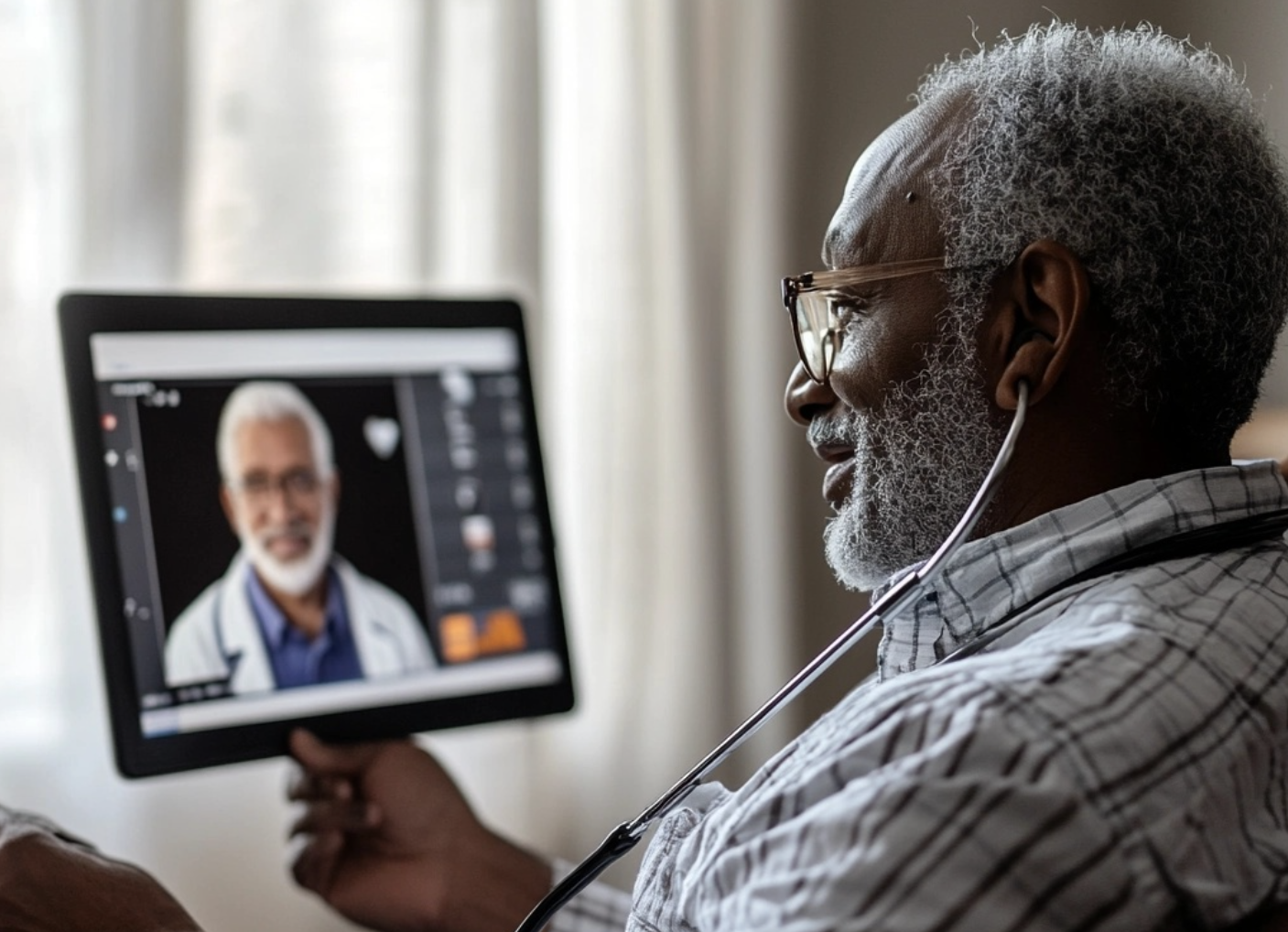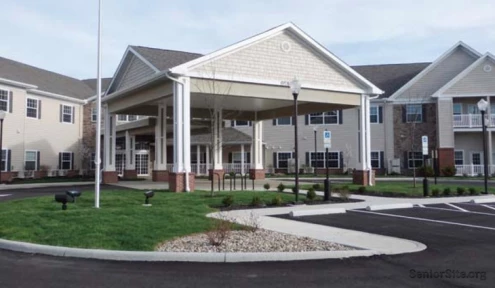In recent years, the healthcare landscape has undergone a significant transformation, with telemedicine emerging as a powerful tool to enhance patient care. This shift has been particularly impactful for seniors, offering new ways to access medical services and manage their health from the comfort of their homes. As we delve into the world of telehealth for seniors, we’ll explore how this technology is changing the face of elderly care, its benefits, challenges, and the promising future it holds.
The Rise of Telemedicine for Seniors
The adoption of telehealth services has seen a remarkable acceleration, especially in providing seniors with convenient access to medical consultations and continuous health monitoring. This surge in telemedicine use among older adults is not just a trend but a fundamental shift in healthcare delivery.
Recent studies have shown a dramatic increase in telehealth adoption among seniors. According to a comprehensive analysis of 618,850 patients aged 65 and older, telehealth usage for working-hours visits jumped from 23.1% pre-pandemic to 59.2% during the pandemic, and settled at 39.5% post-peak 1. This significant uptick demonstrates the growing acceptance and reliance on telemedicine among the elderly population.
Dr. Emily Chen, a geriatric specialist at the National Institute on Aging, notes, “The rapid adoption of telemedicine among seniors during recent health crises has opened new doors for ongoing care. We’re seeing a paradigm shift in how older adults engage with healthcare services.”
Benefits of Telehealth for Older Adults
Telemedicine offers numerous advantages for seniors, addressing many of the challenges they face in accessing traditional healthcare services. Here are some key benefits:
- Improved Access to Healthcare: Telehealth bridges the gap for seniors living in rural areas or those with limited mobility. It provides access to specialists who might otherwise be out of reach due to geographical constraints.
- Reduced Travel Time and Stress: By eliminating the need for physical travel to medical facilities, telemedicine significantly reduces the stress and physical strain often associated with doctor visits for older adults.
- Enhanced Management of Chronic Conditions: Regular virtual check-ins allow for better monitoring and management of chronic conditions such as diabetes, heart disease, and hypertension. A study in Poland showed that 26% of elderly patients in a diabetes management program received medication adjustments via telehealth 2.
- Increased Comfort and Convenience: Seniors can receive care from the familiar and comfortable environment of their own homes, which can be particularly beneficial for those with anxiety or mobility issues.
- Minimized Exposure to Illnesses: Especially crucial during flu seasons or pandemics, telehealth reduces the risk of exposure to contagious diseases in waiting rooms or hospitals.
- Improved Medication Management: Virtual consultations allow healthcare providers to review and adjust medications remotely, ensuring seniors are taking the right doses and combinations of drugs.
Dr. Robert Lee, a researcher specializing in gerontechnology, emphasizes, “Telemedicine isn’t just about convenience; it’s about providing continuous, quality care. For seniors managing chronic conditions, this regular interaction with healthcare providers can be life-changing.”
Challenges in Telemedicine Adoption Among the Elderly
While the benefits of telemedicine for seniors are significant, several challenges can hinder its adoption and effective use:
- Technology Barriers: Many seniors may struggle with using digital devices or navigating telehealth platforms. A national survey revealed that willingness to use telemedicine services declines with age, with those 65 and older showing significantly lower adoption rates 3.
- Digital Literacy: Lack of familiarity with digital tools can make it difficult for some seniors to fully engage with telehealth services.
- Physical Limitations: Vision or hearing impairments can make virtual consultations challenging for some older adults.
- Privacy and Security Concerns: Some seniors may have reservations about the security of their personal health information when using online platforms.
- Quality of Care Concerns: There’s a perception among some older adults that telehealth visits may not provide the same level of care as in-person consultations.
To address these challenges, healthcare providers and technology companies are working on solutions such as:
- Developing user-friendly interfaces specifically designed for seniors
- Offering training programs to improve digital literacy among older adults
- Creating adaptive technologies to accommodate physical limitations
- Implementing robust security measures to protect patient data
- Educating seniors on the effectiveness and benefits of telehealth services
Expert Insights on Telemedicine’s Impact
Healthcare professionals have identified several critical factors for successful telemedicine implementation in senior care:
- Hybrid Approaches: Dr. Lisa Thompson, a geriatric care specialist, suggests, “A combination of in-person and virtual care often yields the best results. This approach allows us to maintain the personal touch while leveraging the benefits of telemedicine.”
- Clear Communication: “Effective telemedicine requires clear, patient-centered communication. We train our staff to practice active listening and to be extra attentive to non-verbal cues during video consultations,” explains Dr. Michael Brown, Chief of Geriatrics at a leading hospital.
- Family Involvement: Dr. Sarah Johnson, a telemedicine researcher, notes, “Involving family members or caregivers in the telehealth process can significantly improve outcomes for seniors. They can provide support, ensure follow-through on treatment plans, and help with technology use.”
Case Studies: Successful Telehealth Implementations
Several real-world examples illustrate the positive impact of telemedicine on senior healthcare:
- Singapore’s Community Nursing: During the pandemic, Singapore implemented a community nursing teleconsultation program. This initiative allowed seniors to maintain care continuity while minimizing virus exposure. The program was so successful that it has been integrated into regular care practices 2.
- Rural Remote Monitoring: In rural areas of the United States, remote monitoring systems have been implemented for seniors with chronic conditions. These systems have led to a significant reduction in hospital readmissions, improving quality of life for patients and reducing healthcare costs 2.
- Mount Sinai’s Rapid Expansion: Mount Sinai Health System in New York rapidly expanded its telemedicine services to older adults during the pandemic. This expansion not only provided necessary care during a crisis but also established a sustainable model for ongoing telehealth services for seniors 4.
The Future of Telemedicine for Seniors
As we look ahead, the future of telemedicine for seniors appears promising. With the global elderly population projected to reach 2.1 billion by 2050 5, the demand for accessible, quality healthcare will only increase.
Advancements in technology are likely to address many of the current challenges:
- Artificial Intelligence could help in early detection of health issues through remote monitoring
- Virtual Reality might be used for cognitive therapies and social engagement
- User interfaces will become more intuitive and senior-friendly
Dr. Jennifer Lee, a futurist in healthcare technology, predicts, “In the coming years, we’ll see telemedicine seamlessly integrated into seniors’ daily lives. From smart home devices that monitor health metrics to AI-powered health assistants, technology will play a crucial role in keeping our aging population healthy and independent.”
Conclusion
Telemedicine for seniors represents a significant leap forward in healthcare delivery. By improving access, reducing barriers, and enhancing the management of chronic conditions, telehealth is not just a convenience—it’s a powerful tool for better health outcomes.
As we continue to navigate the challenges and embrace the opportunities of telemedicine, one thing is clear: the future of healthcare for seniors is increasingly digital, personalized, and accessible. For older adults and their caregivers, exploring telehealth options with healthcare providers could be the first step towards a more connected and proactive approach to health management.
The expansion of telemedicine is more than just a trend; it’s a fundamental shift in how we approach senior care, promising a future where quality healthcare is just a click away for our aging population.












